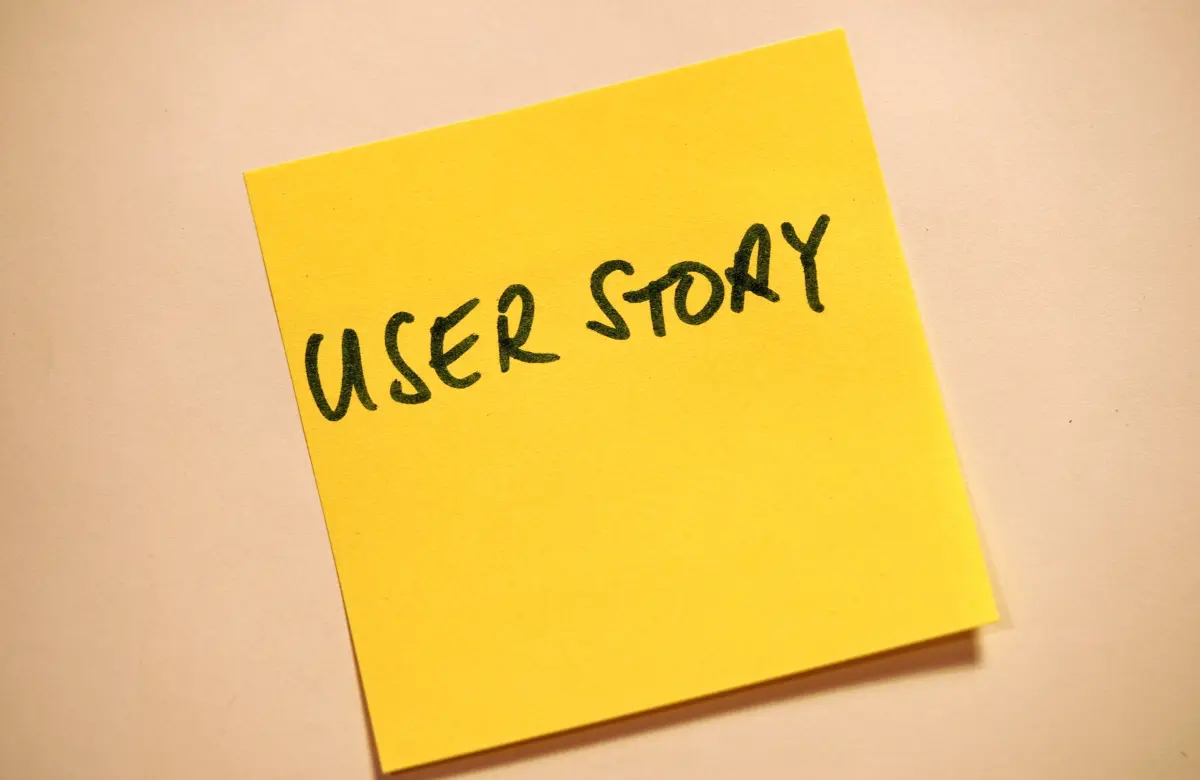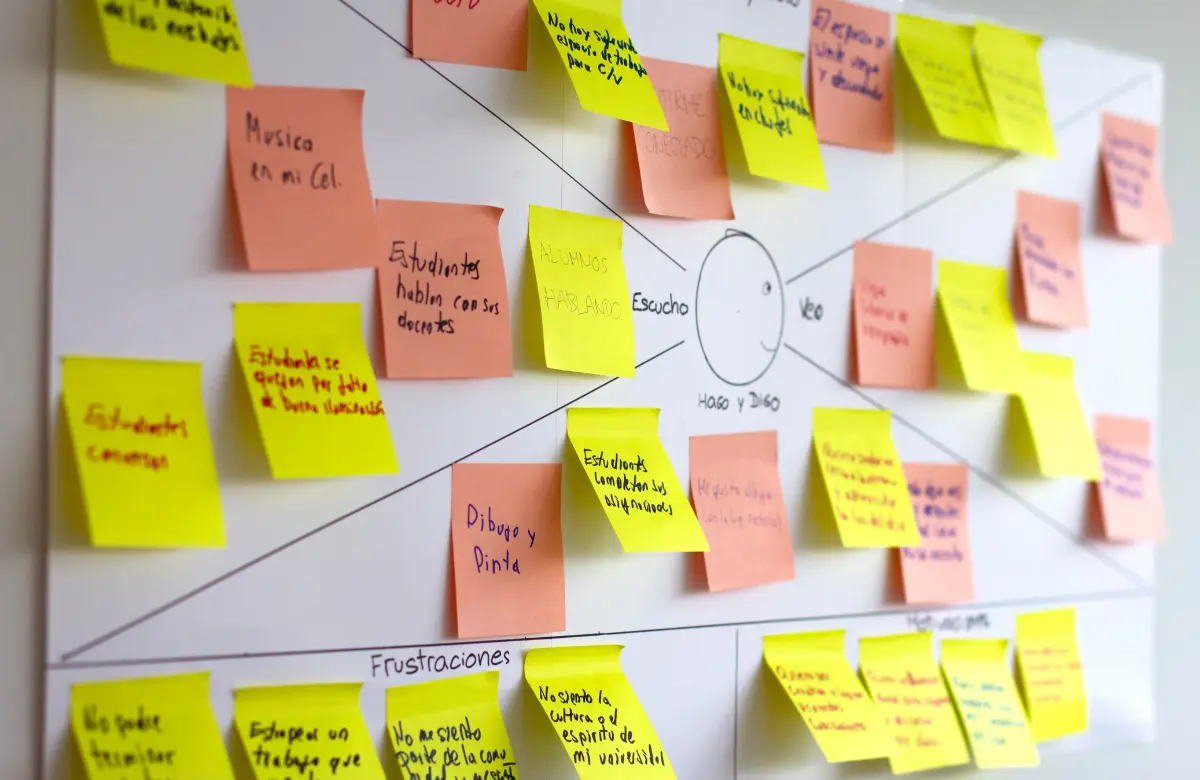User stories are a fundamental component of Agile development, offering a user-centric approach to stipulate product functionality.
They are concise, yet comprehensive descriptions that help software teams to identify and fulfill user needs efficiently.
The effectiveness of these user stories is largely determined by the application of the principles of the 3 Cs of user stories which are Card, Conversation, and Confirmation.
This principle underpins the creation, discussion, and validation of user stories, ensuring they are focused squarely on the user and offer genuine value.
This blog post explores the nuances of the 3 C’s of user stories in Agile, showcasing their potential to enhance both your Agile methodology and overall product development.
What are User Stories in Agile?
User Stories are simple, clear explanations of a software feature written from the perspective of the end-user and are an integral part of Agile development methodologies.
They act as a bridge between the technical team and the user, ensuring that the developed functionality meets the user’s needs.

The Role of User Stories in Agile Development
In the Agile Development process, user stories play a pivotal role including:
- User-Centric Development: User stories keep the focus on the end-user’s needs and experiences, reminding the team of the people they are building the software for.
- Facilitates Communication: They foster efficient communication within the team and with stakeholders about what functionalities need to be developed.
- Prioritization of Work: User stories help in prioritizing tasks based on the value they provide to the user.
- Guides Testing: They serve as a basis for acceptance tests to verify that the developed functionality meets the desired outcomes.
- Simplicity: User stories avoid technical jargon, making them easily understandable to all team members, including non-technical stakeholders.
The Benefits and Challenges of Using User Stories
User stories offer several advantages, but they also come with their own set of challenges.
Benefits of Using User Stories
- Enhances Understanding: User stories facilitate a better understanding of the user’s needs among the team.
- Promotes Collaboration: They encourage active collaboration between all members of the team, including developers, testers, and stakeholders.
- Flexibility: User stories allow for changes and adaptations as they are not set in stone but are rather a starting point for discussions.
- Efficient Planning: They assist in planning by breaking down large features into manageable parts.
- User Satisfaction: By keeping the focus on user needs, user stories increase the likelihood of user satisfaction with the final product.
Challenges of Using User Stories
- Writing Skills: Crafting effective user stories requires practice and skill.
- Vague Stories: If not written correctly, user stories can be too vague, leading to misunderstandings.
- Oversimplification: There’s a risk of oversimplifying complex features, and missing out on necessary details.
- Dependency: User stories often depend on each other, which can complicate planning and development.
- Time-Consuming: The process of writing, discussing, and refining user stories can be time-consuming.

The 3 C’s of User Stories
The 3 C’s of user stories are Card, Conversation, and Confirmation. They represent a process that helps teams to effectively define and understand user stories in Agile development.
Together, these 3 C’s help teams to define, understand, and validate user stories effectively, ultimately ensuring that the developed features meet user needs and expectations.
1. Cards
Cards represent the written user story, often physically written on a card.
It’s a concise expression of a user’s need from the system, typically structured as: “As a [type of user], I want [an action] so that [a benefit/a value]”.
The purpose is to keep the description high-level and not delve into implementation details.
Importance of Writing User Stories on Cards
Writing user stories on cards (or card equivalents in digital tools) is a key practice in Agile methodologies for several reasons:
- Simplicity: Cards enforce brevity and simplicity, encouraging teams to express user needs in the most straightforward manner possible.
- Visibility: Cards can be easily displayed, making the user stories visible to the entire team and fostering a shared understanding.
- Tactility: Physical cards add a tactile element to the planning process, which can enhance engagement and memory.
- Flexibility: Cards can be easily moved around, facilitating the process of prioritizing and reordering user stories.
- Collaboration: The act of writing and displaying user stories on cards promotes collaboration and active participation among team members.
How to Write Effective User Story Cards
Creating effective user story cards involves more than just condensing a user’s need into a sentence.
Here are some best practices:
- User-Centric: Always write from the perspective of the user. Start with “As a [user], I want…”
- Action-Oriented: Clearly state what the user wants to do or achieve.
- Benefit Included: Include the benefit or the reason why the user wants the feature.
- Avoid Technical Jargon: Keep the language simple and avoid technical details, which can be discussed later during conversations.
- Independent: Each user story should be self-contained, in a way that it makes sense on its own and can be developed independently.
Example of a User Story Card
Here’s an example user story for an online shopping website:
“As a customer, I want to be able to filter products by category so that I can quickly find the product I am interested in.”
Card Template and Its Elements
A typical user story card includes the following sections:
- User Story: The main sentence describing who, what, and why.
- Acceptance Criteria: Some teams also include the confirmation aspect on the card itself, listing the conditions that the user story must satisfy to be considered complete.
- Notes: Any additional notes or points that came up during the conversation about the user story that need to be remembered.
- Estimates: Many teams use the card to record their estimates of how much work the user story will involve.
2. Conversation
The card is a reminder to have a conversation about the user story. This is when the team discusses the details of the user story with stakeholders (often including the Product Owner and/or users), asking questions, and exploring the story’s purpose and requirements.
The goal is to gain a shared understanding of what the end user wants and how the system should behave.
The Importance of Conversation in Elaborating User Stories
The conversation serves several key purposes in the context of user stories:
- Detailing: It helps to flesh out the details of the user story that aren’t captured on the card due to its brevity.
- Clarification: It provides an opportunity to clarify any ambiguities or uncertainties in the user story.
- Shared Understanding: It promotes a shared understanding of the user’s needs among all team members.
- Collaboration: It encourages active participation and collaboration, as different team members may offer different perspectives and insights.
- Prioritization: It aids in prioritization, as the conversation often reveals the importance or urgency of the user story.
How to Conduct Effective Conversations Around User Stories
Effective conversations around user stories are crucial for Agile success.
Here are some guidelines:
- Involve Relevant Stakeholders: Ensure the right people are involved in the conversation, including those who will work on the story and those who can provide user insight.
- Ask Questions: Encourage team members to ask questions to clarify understanding and delve deeper into the user’s needs.
- Listen Actively: All participants should listen actively to each other, respecting different perspectives and ideas.
- Document Insights: Capture any important points or decisions made during the conversation to refer back to later.
- Keep it Focused: Keep the conversation focused on the user story at hand to ensure productive use of time.
Example of a User Story Conversation
Considering the user story: “As a customer, I want to be able to filter products by category so that I can quickly find the product I am interested in.”
The conversation might involve questions like: “What categories are we considering? How should the filtering work? Should the user be able to filter by multiple categories simultaneously? How should this feature interact with other search and filter options?”
The Impact of These Conversations on Product Development
Conversations around user stories have a significant impact on product development:
- Quality: They enhance the quality of the product by ensuring that features are developed based on a deep understanding of user needs.
- Efficiency: They improve efficiency by clarifying details upfront, reducing the likelihood of rework later due to misunderstandings.
- Team Morale: They boost team morale and collaboration by fostering open communication and mutual respect.
- User Satisfaction: They increase user satisfaction by ensuring that the developed features truly meet user needs and expectations.
3. Confirmation
Confirmation involves agreeing on the acceptance criteria or conditions that must be met for the user story to be deemed complete.
This is often done through tests that confirm the story’s intended functionality is correctly implemented to ensure everyone understands when a user story is done and working as expected.
The Importance of Confirmation in Ensuring User Stories are Well-Understood and Achievable
Confirmation plays a crucial role in user stories for several reasons:
- Clarity: It provides a clear definition of what it means for the story to be complete, reducing ambiguity.
- Consensus: It ensures that all team members and stakeholders have a common understanding of the story’s goals.
- Guidance: It guides development by providing specific objectives to aim for.
- Testability: It forms the basis for testing the story, as the acceptance criteria can be turned into tests.
- Alignment: It ensures that the team’s efforts are aligned with the user’s needs and expectations.
How to Achieve Effective Confirmation in User Stories
Effective confirmation in user stories requires more than just listing requirements.
Here are some best practices:
- Specific: Make each acceptance criterion specific and unambiguous.
- Measurable: Ensure that the criteria are measurable so that it’s clear whether they’ve been met.
- Relevant: The criteria should be relevant to the user story and provide value to the user.
- Testable: The criteria should be testable, either manually or through automated tests.
- Negotiable: Be open to revising the criteria as you gain more understanding of the user’s needs.
Example of a User Story Confirmation
For the user story: “As a customer, I want to be able to filter products by category so that I can quickly find the product I am interested in.”
Acceptance criteria might include: “When a customer selects a category, only products in that category are displayed. The filtering happens quickly and does not disrupt the user’s experience.”
The Role of Confirmation in Quality Assurance and Testing
Confirmation plays a pivotal role in quality assurance and testing. The acceptance criteria of each user story are used to create tests that ensure the story’s functionality meets the user’s needs and expectations.
If a feature passes all the tests based on the acceptance criteria, it’s considered to have met the confirmation and can be accepted as done.

The Interplay of the 3 C’s of User Stories
The 3 C’s of user stories are interconnected elements of user stories, each playing a crucial role in Agile development.
The Card serves as a high-level summary of a user’s need, offering a starting point for understanding and discussion. It’s a reminder of what the user wants and why, written in a concise, user-centric manner.
The Conversation builds on the Card, delving into the details and nuances of the user’s need. It’s a collaborative dialogue involving the team and stakeholders aimed at exploring the user story in depth and achieving a shared understanding.
The Confirmation solidifies the understanding gained from the Card and the Conversation.
It’s a set of measurable, specific, and testable criteria that the user story must meet to be considered complete, ensuring that the team’s efforts align with the user’s needs.
Together, the 3 C’s form a powerful framework for defining, understanding, and validating user stories, promoting a user-centric approach to software development that is responsive, flexible, and highly aligned with user needs.
Common Mistakes When Applying the 3 C’s of User Stories
Applying the 3 C’s of user stories isn’t always straightforward. Here are some common pitfalls and challenges:
- Overloading the Card: Sometimes teams try to squeeze too much information onto the Card, which defeats its purpose of simplicity and brevity.
- Skipping the Conversation: The Conversation can sometimes be overlooked or rushed, leading to misunderstandings and assumptions.
- Vague Confirmation: The Confirmation might be left vague or undefined, resulting in unclear goals and difficulties in testing.
- Ignoring User Perspective: The user’s needs and perspective can sometimes be neglected, leading to user stories that are more focused on solutions than on user needs.
- Lack of Collaboration: User stories should be a collaborative effort, but sometimes they are created and handled by only one or two individuals, limiting the diversity of perspectives and insights.
Here are some tips on how to avoid these common mistakes:
- Keep the Card Simple: Stick to the format of ‘As a [user], I want [goal], so that [benefit]’. Save the details for the Conversation.
- Promote Active Conversations: Encourage all team members to participate actively in the Conversation, asking questions and sharing insights.
- Define Clear Confirmation: Make sure the Confirmation is specific, measurable, and testable.
- Focus on the User: Always keep the user’s needs and perspective at the center of your user stories.
- Encourage Collaboration: Involve all relevant team members and stakeholders in creating and discussing user stories.
Conclusion
The 3 C’s of User Stories are fundamental to effective Agile development.
By keeping user stories simple and user-centric, promoting active conversations, and defining clear confirmation, teams can greatly enhance their understanding of user needs and the quality of their solutions.
Continuous learning and improvement in applying the 3 C’s is key to mastering Agile development and delivering exceptional value to users.
FAQs
A User Story Includes Which Three Things?
A user story typically includes three main things: the user role, the user goal, and the reason for that goal.





